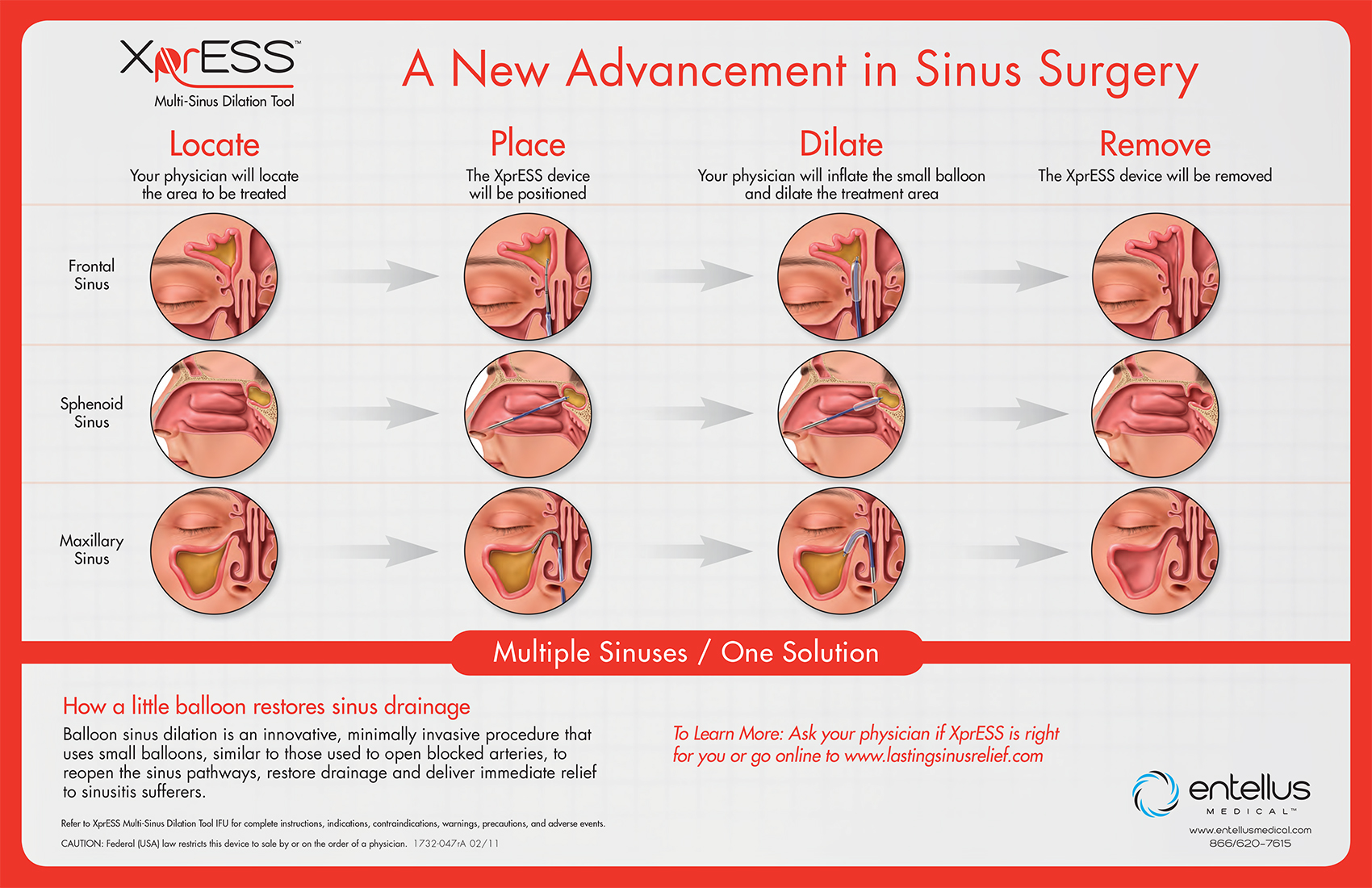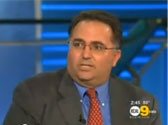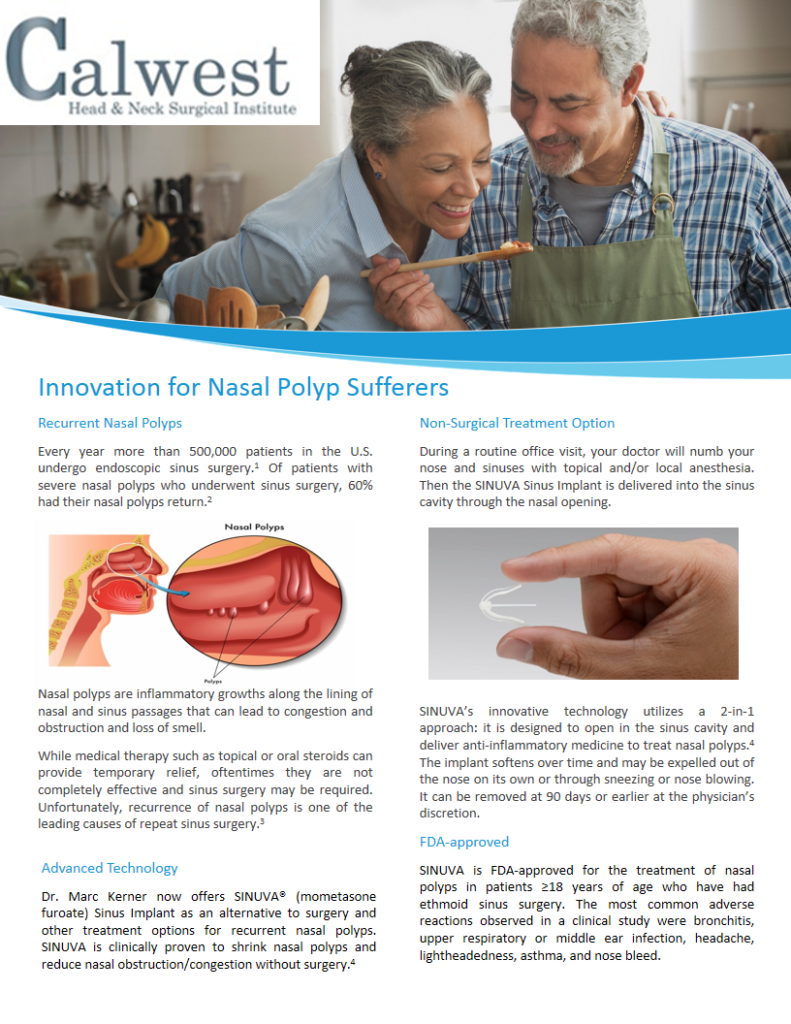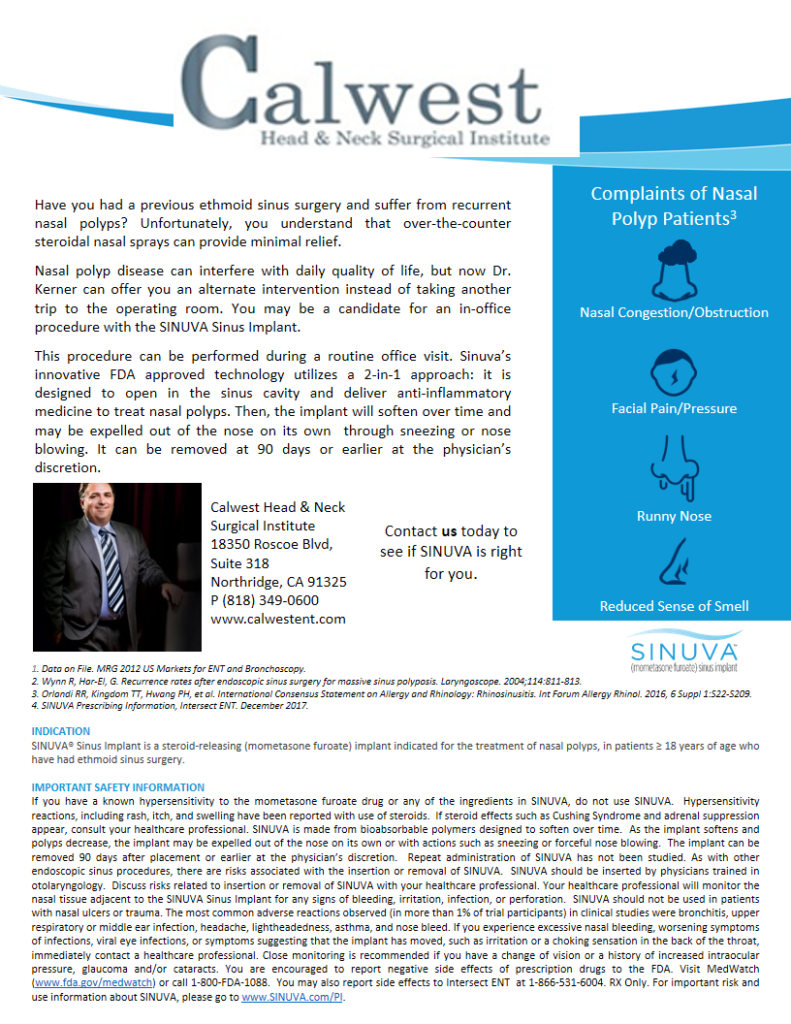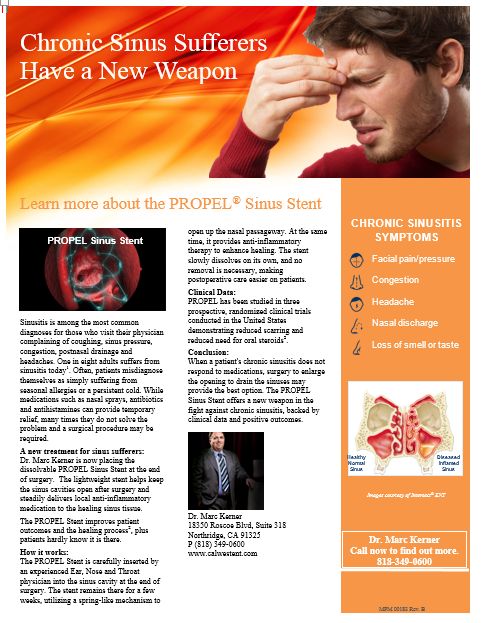Best Balloon Sinuplasty, Sinus Surgeon in Los Angeles
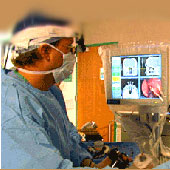 Our mission is to provide highly specialized medical and surgical care under the best balloon sinuplasty doctor in Los Angeles, in a setting that always puts patients’ first. We work to achieve this by combining innovative treatment techniques with heartfelt compassion and guidance. Our greatest satisfaction comes from helping our patients lead healthier, happier lives.
Our mission is to provide highly specialized medical and surgical care under the best balloon sinuplasty doctor in Los Angeles, in a setting that always puts patients’ first. We work to achieve this by combining innovative treatment techniques with heartfelt compassion and guidance. Our greatest satisfaction comes from helping our patients lead healthier, happier lives.
At your office visit, the detailed form is reviewed by Sinusitis doctor prior to an examination. In the course of the examination, we utilize state-of-the art diagnostic nasal endoscopes to look directly at the drainage areas of the nose.
Our complication rate using this modern surgical approach pioneered by Dr. Kerner, the Best Sinus Surgeon in Los Angeles is less than 1 percent. These complications consist of minor postoperative bleeding and scar tissue formation. In the last 6000 cases, there have been no brain or eye injuries. Our revision surgery rate over the past ten years has fallen to below 5%. The national average is somewhere between 25 to 30%. The biggest risk for a need for reoperation is having had prior surgery.
For patients suffering from nasal obstruction, we utilize minimally invasive techniques for correcting nasal obstruction. This includes the use of laser technology and radio frequency technology for turbinate reduction, and endoscopic septoplasty requiring no nasal packing. For patients suffering from nasal obstruction due to valve collapse, we perform a minimally invasive reconstruction procedure that is highly successful in improving nasal breathing. Even patients requiring multiple procedures at the same time are usually back to work within five days. Our postoperative care regimen can be downloaded from our forms section.
Dr. Kerner has been actively teaching the current state-of-the-art minimally invasive techniques using powered instrumentation and image-guided technology since 1998 throughout the United States. He has trained over 475 surgeons with this technology. Dr. Kerner has appeared on CBS, ABC and PBS stations throughout the United States discussing the latest technology in sinusitis treatment.
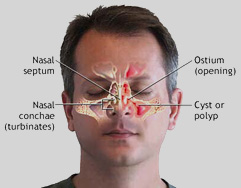 The septum divides the nose into two nasal cavities and the paired “paranasal” sinuses drain into small pre-chambers known as transitional spaces within the nose. The basic physiology of the nose and sinuses is that mucus which is produced by the cells and membranes lining the sinus cavities and nose can become diseased. This can involve either recurrent infections or can evolve into a chronic condition that is poorly responsive to medical therapy.
The septum divides the nose into two nasal cavities and the paired “paranasal” sinuses drain into small pre-chambers known as transitional spaces within the nose. The basic physiology of the nose and sinuses is that mucus which is produced by the cells and membranes lining the sinus cavities and nose can become diseased. This can involve either recurrent infections or can evolve into a chronic condition that is poorly responsive to medical therapy.
When the linings become diseased or infected this is referred to as acute sinusitis. The hallmark of acute sinusitis is facial pain, purulent nasal drainage, nasal congestion, and sometimes fevers and fatigue. Most sinus infections begin like the common cold, but when symptoms persist for 7 to 10 days, we consider this to be a sinus infection, usually caused by bacterial infection. In a very small percentage of cases, complications can occur which can lead to eye (orbital) or brain (meningitis) infections. The primary treatment is antibiotics. When infections recur or symptoms such as facial pain or pressure, nasal obstruction and congestion, and chronic nasal drainage occur, we call this chronic sinusitis.
NASAL ENDOSCOPE

NORMAL ENDOSCOPIC VIEW OF THE INTERIOR OF THE NOSE

NASAL ENDOSCOPIC VIEW OF A NASAL POLYP
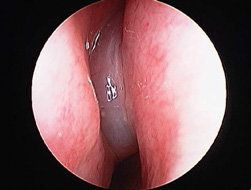
The next diagnostic study is a high resolution computed tomography scan or CT scan.
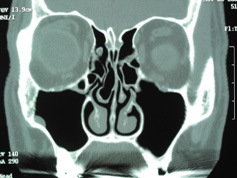
ABNORMAL CT WITH FUNGAL DISEASE FILLING THE RIGHT SIDE OF THE SINUS
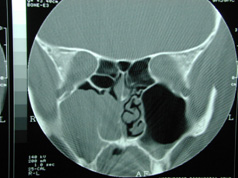 This helps us identify anatomic abnormalities that are not readily visible with nasal endoscopes .Utilizing a combination of the patient’s history, physical examination with the nasal endoscope in the office, and a CT scan using the latest 64 slice scanner technology, a concise treatment plan is individualized for each patient.
This helps us identify anatomic abnormalities that are not readily visible with nasal endoscopes .Utilizing a combination of the patient’s history, physical examination with the nasal endoscope in the office, and a CT scan using the latest 64 slice scanner technology, a concise treatment plan is individualized for each patient.
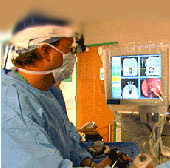 Our treatment protocols are custom-tailored to the individual patient. We utilize state-of-the-art therapeutic agents to treat sinus problems medically. When medical therapy fails surgery may be recommended. Again, each patient is different so the surgical plan is customized to correct anatomic deformities, and resolve the conditions that will allow the medical therapy to be effective.Patients with history suggestive of allergy or asthma are referred to the appropriate sub specialists. We work closely with a number of allergy and pulmonary sub specialists to provide the most up-to-date and optimal medical therapy.
Our treatment protocols are custom-tailored to the individual patient. We utilize state-of-the-art therapeutic agents to treat sinus problems medically. When medical therapy fails surgery may be recommended. Again, each patient is different so the surgical plan is customized to correct anatomic deformities, and resolve the conditions that will allow the medical therapy to be effective.Patients with history suggestive of allergy or asthma are referred to the appropriate sub specialists. We work closely with a number of allergy and pulmonary sub specialists to provide the most up-to-date and optimal medical therapy.
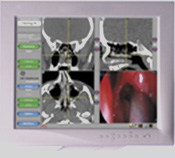 In patients that are surgical candidates, Dr. Kerner utilizes the latest technology in the delivery of surgical care. All surgeries are performed with powered instrumentation, and image-guided technology and Stealth image-guided surgical systems. Dr. Kerner as Best Balloon Sinuplasty Surgeon in Los Angeles has pioneered the use of these devices and has been interviewed in a number of news programs using these technologies.
In patients that are surgical candidates, Dr. Kerner utilizes the latest technology in the delivery of surgical care. All surgeries are performed with powered instrumentation, and image-guided technology and Stealth image-guided surgical systems. Dr. Kerner as Best Balloon Sinuplasty Surgeon in Los Angeles has pioneered the use of these devices and has been interviewed in a number of news programs using these technologies.BALLOON SINUPLASTY
Dr. Kerner is also one of the most experienced surgeons trained in the latest minimally invasive technology – balloon sinuplasty in Los Angeles. Dr. Kerner developed instrumentation used with the balloon technologies that allow surgeons to do the procedure without flouroscopy thereby avoiding radiation to both the patient and the doctor.
The XprESS Multi-Sinus Dilation Tool is the latest advancement available to more safely and effectively treat sinus disease and disorders. XprESS is an FDA approved instrument designed to access and treat the openings of the frontal, maxillary, and sphenoid ostia. This results in clearing these blocked sinuses, restoring normal sinus drainage and function, and preserving anatomy and mucosal tissue. This great new device is fashioned after a tool these doctors have been using for 20 years, a sinus seeker. XprESS, in essence, is a sinus seeker with an inflatable balloon on the end that also has integrated suction and irrigation. The end of the XprESS is also malleable to allow Dr. Kerner to bend and shape the tip as necessary giving him greater control and precision when operating on his patients.
Are you stuck constantly taking medications such as nasal sprays, decongestants, steroid sprays, antihistamines, and other treatments with little or no relief? Do you have sinus infections multiple times a year? Are you worried or concerned about going to the operating room to treat your sinus problems? If you answered “Yes” to any of these questions, talk to Dr. Kerner to see if you are a candidate for an in-office sinus balloon procedure.
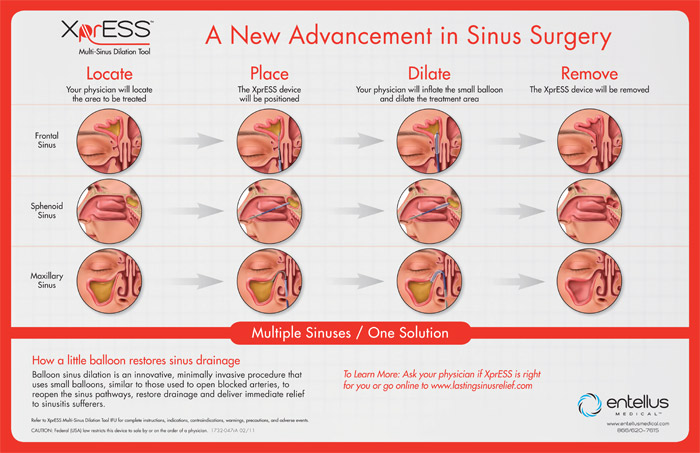 The Entellus Medical – XprESS Multi-Sinus Dilation Tool has been proven to be safe, effective, and durable in treating patients suffering from sinus disease and disorders.
The Entellus Medical – XprESS Multi-Sinus Dilation Tool has been proven to be safe, effective, and durable in treating patients suffering from sinus disease and disorders.
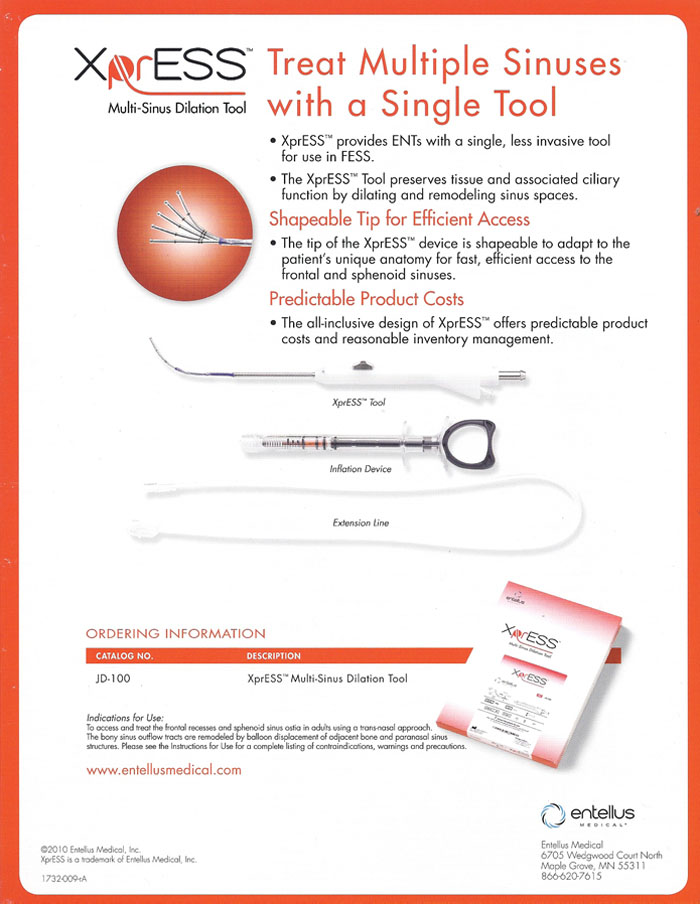 XprESS Multi-Sinus Dilation Tool – Patient Information
XprESS Multi-Sinus Dilation Tool – Patient Information
Dr. Kerner’s Interview with KKJZ, KKGO and KMOZRT radio stations about sinus and nasal issues.
Dr. Kerner’s Interview with KKJZ, KKGO and KMOZRT radio stations about sinus and nasal issues.
Dr. Kerner’s Clinical Article on Intranasal Sinus Surgery:
DR KERNER ON VARIOUS MEDIA OUTLETS DISCUSSING SINUS SURGERY
 View Valley Scene Article Dr. Marc Kerner answers questions on Sinusitis in Valley Scene Magazine.
View Valley Scene Article Dr. Marc Kerner answers questions on Sinusitis in Valley Scene Magazine.

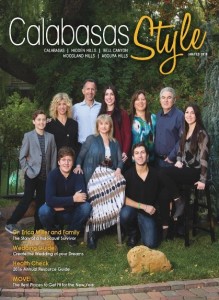 View Calabasas Style Magazine Article of Dr. Marc Kerner, discussing Balloon Sinuplasty in Calabasas Style Magazine.
View Calabasas Style Magazine Article of Dr. Marc Kerner, discussing Balloon Sinuplasty in Calabasas Style Magazine.

 View Conejo Valley Lifestyle Magazine Article.
View Conejo Valley Lifestyle Magazine Article.
Read treatment for recurrent colds or allergy attacks that don’t seem to go away in Conejo Valley Lifestyle Magazine. Dr. Kerner explains treatment of Bacterial sinusitis.
Dr. Kerner In Studio on KCAL News Discussing Balloon Sinuplasty and Entellus
Dr Marc Kerner on CBS Special Assignment
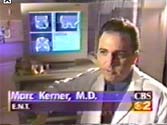 Watch Dr. Marc Kerner on KCBS – Ch 2 “Special Assignment” discussing minimally invasive endoscopic sinus surgery using Insta Track
Watch Dr. Marc Kerner on KCBS – Ch 2 “Special Assignment” discussing minimally invasive endoscopic sinus surgery using Insta Track
Sinusitis Statistics
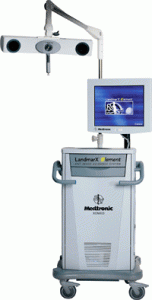
According to the National Institute of Allergy and Infectious Diseases
Sinusitis means your sinuses are infected or inflamed. Your sinuses are hollow air spaces within the bones surrounding the nose. They produce mucus, which drains into the nose. If your nose is swollen, this can block the sinuses and cause pain and infection.
Sinusitis can be acute, lasting for less than four weeks, or chronic, lasting much longer. Acute sinusitis often starts as a cold, which then turns into a bacterial infection. Allergies, pollutants, nasal problems and certain diseases can also cause sinusitis.
Symptoms of sinusitis can include fever, weakness, fatigue, cough and congestion. There may also be mucus drainage in the back of the throat, called postnasal drip. Treatments include antibiotics, decongestants and pain relievers. Using heat pads on the inflamed area, saline nasal sprays and vaporizers can also help.
According to the American Academy of Otolaryngology – Head and Neck Surgery
Antibiotic Treatment For Sinusitis
Antibiotics are labeled as narrow-spectrum drugs when they work against only a few types of bacteria. On the other hand, broad-spectrum antibiotics are more effective by attacking a wide range of bacteria, but are more likely to promote antibiotic resistance. For that reason, your ear, nose, and throat specialist will most likely prescribe narrow-spectrum antibiotics, which often cost less. He/she may recommend broad-spectrum antibiotics for infections that do not respond to treatment with narrow-spectrum drugs.
Acute Sinusitis
In most cases, antibiotics are prescribed for patients with specific findings of persistent purulent nasal discharge and facial pain or tenderness who are not improving after seven days or those with severe symptoms of rhinosinusitis, regardless of duration. On the basis of clinical trials, amoxicillin, doxycycline, or trimethoprim–sulfamethoxazole are preferred antibiotics.
Chronic Sinusitis
Even with a long regimen of antibiotics, chronic sinusitis symptoms can be difficult to treat. In general, however, treating chronic sinusitis, such as with antibiotics and decongestants, is similar to treating acute sinusitis. When antibiotic treatment fails, allergy testing, desensitization, and/or surgery may be recommended as the most effective means for treating chronic sinusitis. Research studies suggest that the vast majority of people who undergo surgery have fewer symptoms and better quality of life.
According to the American Cancer Society
What Are The Key Statistics About Nasal Cavity and Paranasal Sinus Cancers?
Cancers of the nasal cavity and paranasal sinuses are rare. About 2,000 people in the United States develop cancer of the nasal cavity and paranasal sinus each year. Men are about 50% more likely than women to get this cancer. Nearly 80% of the people who get this cancer are between the ages of 45 and 85. These cancers also occur much more often in certain areas of the world such as Japan and South Africa. About 60% to 70% of cancers of the nasal cavity and paranasal sinuses occur in the maxillary sinus; 20% to 30% in the nasal cavity; 10% to 15% in the ethmoid sinuses; and less than 5% in the frontal and sphenoid sinuses.
At Home Treatment Options
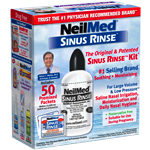
NeliMed NasaFlo Neti Pot and NeliMed Sinus Rinse are two options for at home treatment.






